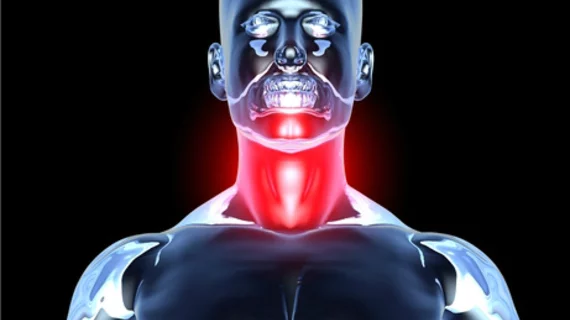Experts advocate for more intensive head-and-neck cancer follow-up using FDG-PET/CT
Experts are touting the benefits of an intensive follow-up regimen for head and neck squamous cell carcinoma (HNSCC) using PET/CT.
About two-thirds of individuals with this disease face risk of possible recurrence in the first two years after treatment. Scientists with the University Hospital of Brest, France, recently tested the utility of using 18F-fludeoxyglucose–positron emission tomography with computed tomography (18FDG-PET/CT) to monitoring and catch these cases earlier.
They found promising results, with three-year overall survival better among the PET/CT group (72.5%) when compared to the conventional follow-up (64.3%), according to a study published in JAMA Network Open.
“Prospective multicenter randomized studies are needed to investigate a causal relationship with survival and may help to define a follow-up schedule,” Jean-Christophe Leclère, MD, with the hospital’s Head and Neck Surgery Department, and co-authors wrote Aug. 1.
To reach their conclusions, French physicians conducted a case-control study with patients treated at three centers in the northwestern port city of Brest. The retrospective analysis included individuals 18 and up with newly diagnosed HSNCC between 2006-2019 and who achieved a complete imaging response three to six months after treatment intended to cure the disease. All had a minimum of three years of follow up afterward.
Among the 782 individuals included in the analysis, 497 (64%) underwent 18FDG-PET/CT while the other 285 (36%) received the traditional CT approach. Regression analysis revealed an association between undergoing PET/CT and lower risk of death (odds ratio, 0.71) after adjusting for factors such as age, sex and comorbidities. The average three-year overall survival rate was “significantly better” in the PET/CT group, the authors reported. Further analysis showed better mean survival rates among those at HSNCC stages III and IV in the PET/CT group, with no significant difference at stages I or II.
“To the best of our knowledge, this is the first series demonstrating a significant survival difference in patients monitored in an intensive follow-up strategy based on 18FDG-PET/CT,” the authors noted, while highlighting several possible limitations of their work. Read more about them at the link below.

